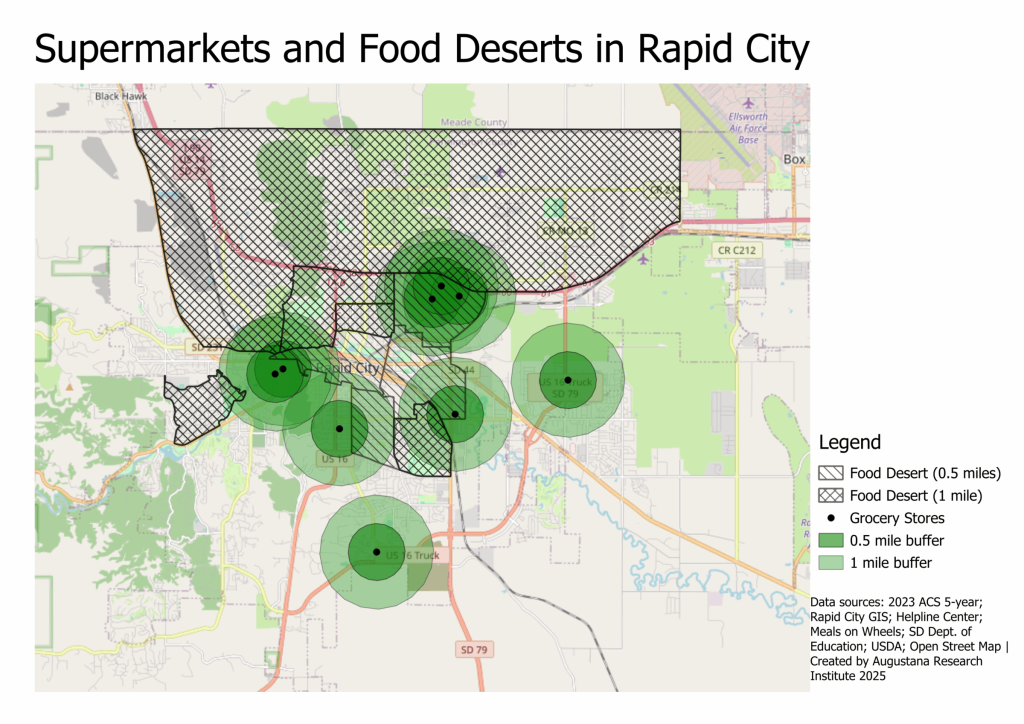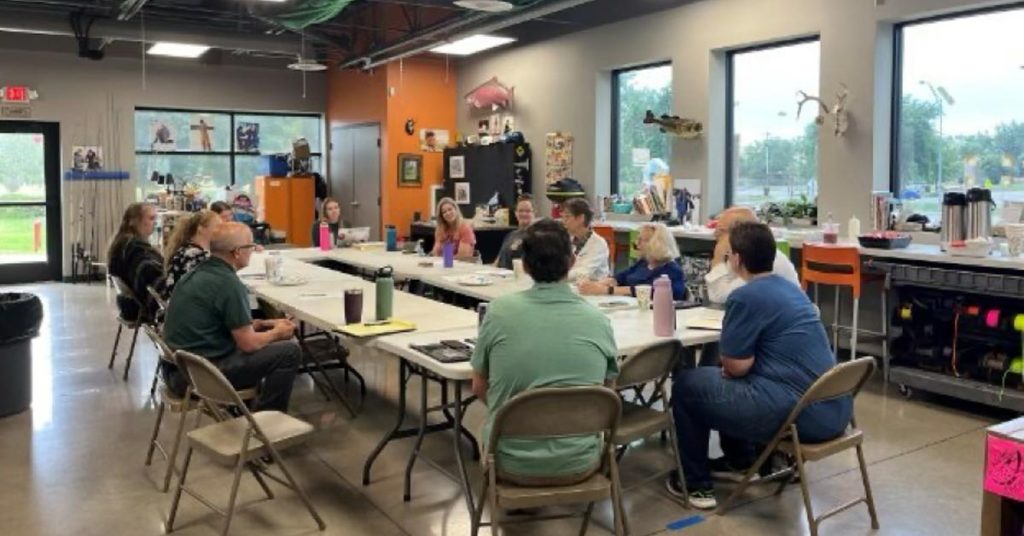RAPID CITY, S.D. – A new study from the Augustana Research Institute (ARI) has identified key barriers to food access in Rapid City, South Dakota. The “Food Security Needs Assessment of Rapid City,” commissioned by the Black Hills Area Community Foundation (BHACF), combines spatial data with focus group findings to provide an in-depth look at the issue.
The study estimates that 33,702 Rapid City residents live in “food desert” census tracts, which are areas with low income and low access to supermarkets. The report flags neighborhoods between North Street and I-90 as having the highest concern, where an estimated 75% of the population lives at least a mile from a supermarket.

The study also details significant logistical challenges, with both transportation and limited hours for charitable organizations posing hurdles. “What we need to work on the most is more locations and more timing correctly because sometimes we all don’t work on the same work schedule,” said a young person in a focus group. A Rapid City veteran noted, “It takes all afternoon” to acquire food, as a person’s window to get to a charity is limited by bus schedules and hours of operation.
Focus groups revealed residents are making difficult financial tradeoffs. A mother described having to choose between feeding her child and herself, while a college student explained, “There are days where I’ll eat one meal a day because my payment for school is coming up, so, it’s like, I gotta stretch my money.” Another mother said, “When it literally came down to like just having that apartment but no food…I felt really bad about putting my kids in that.”
The report also found that stigma is a significant barrier for some residents seeking help. “Just embarrassment, I guess, is the biggest thing. It’s having to go like that, get help. And, I’m not a person that likes to ask people for help much,” said an older adult.
BHACF is planning to invest $100,000 in food security grants in 2026 to address gaps identified by the study.




